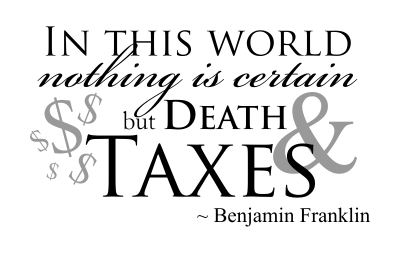During his recent State of the Union Address, President Obama outlined his proposal to change several key provisions of the Internal Revenue Code. Specifically, the President advocated for the elimination of the basis step‐up that occurs at an individual’s death and an increase of the top capital gains rate from 23.8% to 28% for married couples with incomes over about $500,000.
Both policies would have far reaching effects that would drastically change the current tax landscape. However, given the practical, political and historical conflicts surrounding these proposals, it is unlikely they will ever become law.
Obama’s Proposal
President Obama’s proposal aims to eliminate the basis step‐up that applies at death by requiring estates to pay capital gains tax at the time of inheritance. This change would essentially add “death” to the list of realization events that determine when capital gains become subject to income taxation. The President’s proposal exempts the first $100,000 of capital gains per individual ($200,000 per married couple) from tax. Tracking current law for lifetime sales, there is an additional $250,000 exemption that applies to capital gains derived from a personal residence ($500,000 per married couple).
The President proposed to couple the elimination of the basis step‐up at death with an increase to the top capital gains rate from 23.8% to 28% for married couples with incomes over about $500,000. The 28% rate represents a 24.2% capital gains rate and the 3.8% Medicare surcharge.
The Proposal’s Effect
Under the current tax regime, all assets included in a decedent’s estate receive a stepup in basis as of the decedent’s date of death. This step‐up in basis is a kind of devil’s bargain (because one has to trade estate tax liability for it), and has been referred to as the “angel of death” tax loophole. The beneficiary who receives the property obtains a cost basis equal to the fair market value of the asset as of the decedent’s date of death.
This means that the capital gain trapped within inherited assets is wiped clean entirely at death, and there will be no income tax if those assets are sold immediately following the decedent’s death. The decedent’s assets are subject to current estate tax rates and applicable exemptions. Below is a simplified example:
- Decedent “D” dies on January 31, 2015. His entire estate consists of a portfolio valued at $6,000,000 with a cost basis of $3,000,000.
- Assuming D had not used any of his Unified Credit during his lifetime, $5,430,000 passes to Beneficiary “B” free of federal estate taxes.
- The remaining $570,000 would be subject to federal estate taxes at the top rate of 40% or $228,000 (This example assumes B is not D’s spouse, in which case the marital deduction would not apply.)
Assuming the same facts outlined above, under the President’s proposal:
- D’s estate owes income taxes on all appreciation in excess of $100,000.
- Assuming D falls into the new proposed 28% rate, D’s estate owes income taxes on $2,900,000 of appreciation amounting to $812,000. This $812,000 would be in addition to the $228,000 already owed by D’s estate for federal estate tax purposes.
- D’s federal tax liability is now $1,040,000.
Why the “Angel of Death” Tax Loophole Is Here To Stay
First, a basis step‐up is considered by many professionals to be a necessary way to reestablish a known starting point for income tax purposes. It can be a herculean task to establish an accurate picture of an individual’s cost basis in an asset when they are alive. It becomes even more difficult to reconstruct an asset’s cost basis after the owner of the asset has passed away. Given new IRS regulations requiring the reporting of cost basis information this practical problem may diminish for readily marketable securities.
However, because the regulations only took effect in 2011, it will likely take several decades before custodial records can be relied upon. Additionally, the difficulties will remain for tangible assets and real property. This is the main practical problem with President Obama’s proposal.
Second, both of these proposals effectively represent increases to personal income tax rates. Such increases are unlikely to be passed with a Republican‐controlled Congress. These ideas, however, do offer us a window into the thinking of an important part of the Democratic Party. This insight could provide some guidance of what future bills may look like. From a purely political standpoint, however, these proposals have no practical possibility of passage.
Third, for some larger estates the elimination of the basis step‐up results in a true double taxation, where a single trigger (death) causes a tax under two separate systems. The imposition of a double tax represents a fundamental break with established precedence. Instances of double taxation are exceedingly rare in the Internal Revenue Code and generally only arise in the corporate context.
To see double taxation applied in the estate tax sphere is particularly jarring given the recent expansion of the Unified Credit. Ultimately, if the President wants to expand the estate tax base, he would be better off proposing a reduction to the current $5.43 million applicable exclusion amount rather than attempting to circumvent established tax policy.
———
Michael N. Delgass, JD, is Managing Director of Sontag Advisory, which offers wealth management, investment advisory and consulting services. Nicole R. Hart, JD is Director of Trusts and Estates at Sontag Advisory, and Eric Dostal, JD is an Advisor Associate.
Thanks for reading CPA Practice Advisor!
Subscribe Already registered? Log In
Need more information? Read the FAQs
Tags: Advisory, Tax Planning




